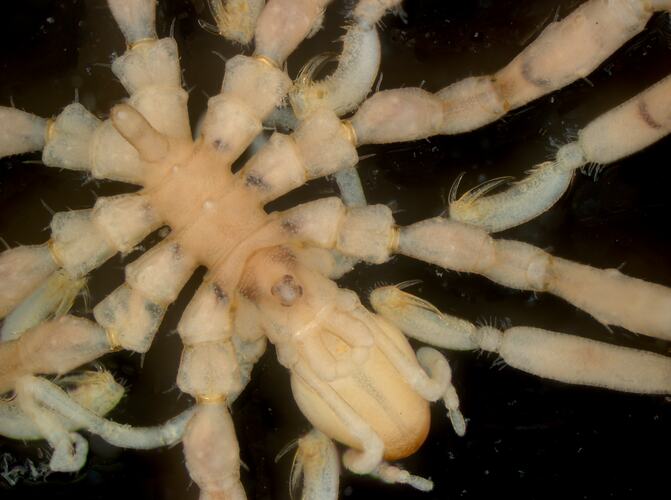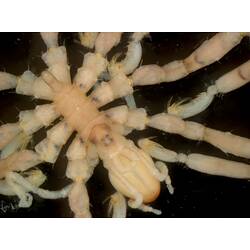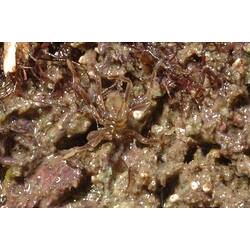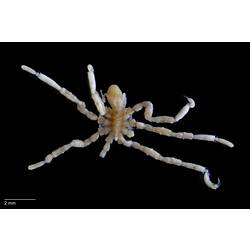General Description
Body pale yellow to light brown, usually without markings. Mouth parts at front of body (proboscis) longer than the body. Eight segmented walking legs attached to the sides of the trunk. Leg span up to 2 cm.
Biology
This species is the most commonly observed sea spider along the southern coastline. On exposed coast with high energy waves, they shelter in crevices, gullies or areas away from the main tidal surge. Males carry the eggs, holding them between body parts called ovigers that hang under the animal.
Distribution
Southern Australia.
Habitat
Under boulders or in the open, to depth of 10 m.
More Information
-
Animal Type
-
Animal SubType
-
Brief Id
Yellow to light brown, long set of mouth parts (proboscis).
-
Colours
Yellow, Brown
-
Habitats
-
Diet
Carnivore
-
Diet Categories
Anemones, Segmented worms
-
Endemicity
-
Commercial
No
-
Conservation Statuses
CITES: Not listed, FFG Threatened List: Not listed, EPBC Act 1999: Not listed, IUCN Red List: Not listed
-
Depths
Shore (0-1 m), Shallow (1-30 m)
-
Water Column Locations
On or near seafloor
-
Taxon Name
-
Scientific Author
Flynn, 1919
-
Common Name
Pycnogonid
-
Other Names
Sea Spider
-
Phylum
-
Subphylum
-
Class
-
Order
-
Family
-
Genus
-
Species Name
australiensis




